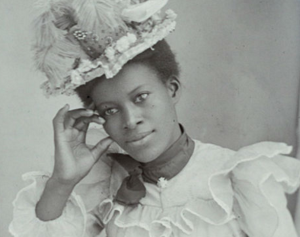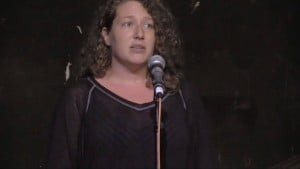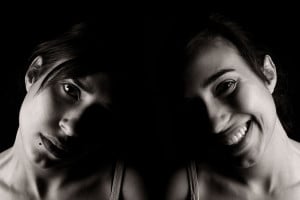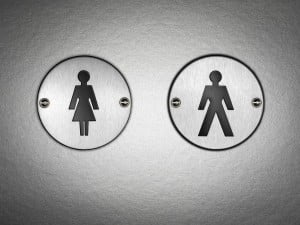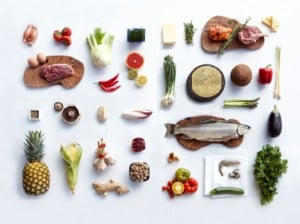
Source: Getty Images
Originally published on Libero Network and cross-posted here with their permission.
(TRIGGER WARNING: DISORDERED EATING)
Eggs. Non-fat milk. Wholegrain bread. All-natural peanut butter. Lettuce, cashew nuts, health cereal, and fat free organic yogurt. These seem like normal, healthy items for a grocery list.
But what if they were the only things on your list?
“It was not about food at all. It was all about control,” says Katy Boorman, a 22-year-old university student from Wellington, New Zealand.
It was during a relapse into anorexia when Katy’s desire to eat healthy crossed the line into something more serious.
“I realized that I couldn’t starve, so I ate really healthy foods and exercised every single day,” says Katy. “It was different from my anorexia because my routine was so rigid. I ate three square meals a day at the same time every day and exercised twice a day.”
Katy’s behaviors are known now as “orthorexia” – a term coined by holistic physician Steven Bratman, M.D. which is constructed from the word “ortho,” meaning straight, correct, and true.
According to Bratman, orthorexia nervosa refers to a “pathological fixation on eating proper food.”
“Many of the most unbalanced people I have ever met are those who have devoted themselves to healthy eating,” says Bratman in his article for Yoga Journal entitled “Health Food Junkie.”
Bratman says, “In fact, I believe some of them have actually contracted a novel eating disorder.”
“The orthorexic’s inner life becomes dominated by efforts to resist temptation,” Bratman says in the article. “Self-condemnation for lapses, self-praise for success at complying with the chosen regime, and feelings of superiority over others less pure in their dietary habits.”
Katy explains, “It stole my entire personality and made me an incredibly bitchy person.”
Katy avoided all foods that were fried, high in sugar, or processed.
“I ate as ‘clean’ as possible,” she says, “I could eat oatmeal, fruit, sandwiches, vegetables, and meat. I basically had chicken, salad, and potatoes every day for dinner.”
And she measured every portion.
“It was very much a form of addiction,” she adds, “and a way of managing my anxiety while numbing my feelings.”
As with any addiction, it impacted Katy’s life on multiple levels. “I rarely ever saw my friends or went to parties, and if I did, it had to be organized well in advance.”
In addition, Katy and her boyfriend broke up, and her relationship with her family was filled with fighting because of her irritability.
“Eating only healthy foods gave me a way to feel powerful over others and feel in control of my situations,” says Tayla James similarly, a 19-year-old college student from Bangor, Maine.
Tayla’s orthorexia developed during her anorexia. “It basically added to my eating disorder,” she says, “Because it was another behavior I had and couldn’t let go of.”
She used this behavior as a way to ease her anxiety, obsessing over the avoidance of eating anything labeled (in her mind) as “unhealthy” – sugary foods, most meat, and pizza.
Her rules included eating only organic foods and nothing artificial, and she would only use all-natural body products. Her diet consisted mainly of vegetables, fruits, nuts and seeds, yogurt, sprouted grain breads, and chicken.
As the quality of Tayla’s diet increased, the quality of her life decreased.
“Socially, I felt like an oddball, and often left out,” she says. “People would judge me on my food and ask me why I was so healthy.”
Tayla’s own rules contributed to her feelings of isolation.
Eating out at restaurants was out of the question, as well as any family gatherings where she didn’t know what was being served. In addition, she would cook her own dinners, never eating with her family.
Scott Gramke, a 19-year-old college student from Phoenix, Arizona, developed orthorexia during his struggle with anorexia, and it continued when his anorexic behaviors stopped.
“I consider [my anorexia and my orthorexia] to be very interrelated,” he says.
Like with his anorexia, Scott believes that although the restricting of “unhealthy” foods and the obsession with eating “right” were focused around food, the problem itself was actually rooted in much deeper issues.
Unlike Katy, Scott found his orthorexia caused him more anxiety, because he constantly spent his time trying to avoid situations where he couldn’t stick to his rigid eating habits, as well as trying to justify his eating behaviors.
When his family was preparing dinner, he always made his way into the kitchen to modify his own food – omitting the butter, using less oil, serving up less food for himself.
Eventually Scott’s family banned him from the kitchen entirely.
“Even after I was banned, I tried to find out what was being put into what I was eating,” he says.
On Scott’s list of foods to avoid were: anything containing dairy fat or high levels of carbs and any bread products that were not whole grain. He didn’t eat pizza or any dishes with cream, and his salads were eaten without dressing.
“It was hard for me to focus on enjoying myself [at social events],” he says, “because I was too busy worrying about the food I was going to have to eat.”
“Whenever I ate out,” Scott recalls, “I was in a very bad mood because I was anxious and agitated. This is still a struggle for me today.”
Katy, Tayla, and Scott are not alone.
According to the National Eating Disorder Information Centre of Canada, 1-in-2 girls and 1-in-3 boys engage in unhealthy methods to control appetite and weight.
The big question is: Where is the line drawn?
When does “healthy” become “obsessed?” And can good intentions lead to behaviors that cause more harm than good?
For me, I realized I’d crossed the line when I discovered that my commitment to healthy eating was really an addiction – and rather than being in control, I realized that I was completely out of control.
My orthorexia began when I, like Katy, found it too difficult to keep my anorexia a secret. In my mind, I was being healthy, but in reality, I had simply replaced one unhealthy obsession with another.
I had a strict list of guidelines and rules when it came to eating and, rather than enjoying the experience of simply feeding myself, I enjoyed the rigidity of my obsessive diet.
Some of my restrictions included: no red meat, no cheese, only non-fat milk and dairy products, no white flour, no (or minimal) oil, absolutely nothing fried, and only brown rice.
I wouldn’t use salad dressing; instead I used either lemon juice or flavored vinegar.
In addition, I convinced myself I was allergic to sugar and avoided all foods that had sugar in them.
I had a set of rules regarding what I had to consume in a day, as well.
This included one non-fat, sugar-free, all natural, probiotic yogurt a day; two tablespoons of apple cider vinegar with every meal; and five egg whites with one yolk.
I became a master calculator – not only of calories, but of protein, carbohydrate, and fat content as well. I measured all of my portions with precision. Grocery shopping took hours as I read each and every label to figure out if it fit into my rigid diet.
Needless to say, eating out at restaurants was hardly an option for me, the thought of which brought high levels of anxiety and stress. Family holidays were filled with turmoil as I argued with my parents about where, when, and what we were going to eat each day and how I was going to fit in my daily exercise to compensate for my “bad” eating.
When I fell off track after being on holiday for a few days or eating out at restaurants too often, I would cleanse.
I went on intense detoxes that lasted as long as a week. These cleanses consisted of nothing but blended raw fruits and vegetables.
I somehow thought this would make me “good” again.
Ironically, people praised me for it. “Good for you for having such self-control. Good for you for being so healthy,” they said. Little did they know.
Orthorexia is so easy to hide. Because it is one of the least common forms of eating disorders, even if people see the signs, they don’t know how to label it.
In a 2011 study done by the Department of Psychology at the Catholic University of Leuven in Tienen, Belgium, professionals in the eating disorder field were polled to gather their views on orthorexia and lesser-known eating disorders.
Nearly 67% of the professionals observed cases of orthorexia in their own practices – the highest result of any of the eating disorders discussed – with 68% stating that orthorexia deserves more attention and research.
There is a lot of controversy over whether or not orthorexia should make it into a future edition of the DSM-V (Diagnostic and Statistical Manual of Mental Disorders).
Without labeling orthorexia as a clinical eating disorder, it will be more difficult for patients to receive appropriate care and insurance coverage for their recovery.
However, it is premature to add it to the DSM-V. Sufficient research about recovery from this disorder is required, or it could do more harm than good.
Clearly – as can be seen by the reflections of those who have experienced orthorexia – recovery from this disorder needs to focus on more than just food.
One must deal with both the symptoms (restricting, bingeing, purging) and the root problems (low self-esteem, guilt, shame).
One must ask why they feel the need to eat “perfectly,” because it’s not just about the food. And so one must address the inner issues behind their obsessive eating behaviors in order to fully recover.
The food can’t be forgotten, though.
Part of recovery involves learning to feed yourself again.
Healthy eating is not determined by what you eat as much as why you are eating it.
For some people eating a salad for lunch could be a healthy thing. During the stage of my life when I struggled with orthorexia, however, eating a salad was the least healthy thing I could do. I needed to let go of my obsessions and pick up a piece of pizza instead.
There is no “one size fits all” when it comes to healthy eating. Bratman says he’s given up the belief that one day, a universal theory of eating will exist that will match up people with the perfect diet for them.
In recovery, however, I learned about Intuitive Eating – an approach originated by dietitian and eating disorder counsellor Evelyn Tribole, MS, RD, and nutritionist Elyse Resch, MS, RD, FADA.
In their book Intuitive Eating, Tribole and Resch explain that this approach to diet revolves around a simple theory of feeding yourself: Eat when you are hungry, eat what your body craves, and stop when you are full.
It proves time and again to be successful, not just for those recovering from an eating disorder, but for anyone wishing to develop a healthy relationship with food and their body.
Katy, Tayla, and Scott follow Intuitive Eating as part of their recovery from orthorexia, as do I.
Intuitive Eating successfully reverses eating behaviors because it strips eating of any guilt, shame, and regulations. Most importantly, it brings us back to our true selves and allows us to begin trusting ourselves again.
We must give up our need for control, and instead give in to a willingness to become one with our bodies, and to simply feed ourselves. No guilt. No shame. No rules.
My orthorexia was about enslavement. It was about a set of laws I had to abide by to be okay, to be enough.
Since embracing intuitive eating, I’ve learned that I am enough just the way I am. I’ve gained a sense of freedom I never felt possible.
I don’t eat brownies every day, although in the first two weeks of my Intuitive Eating journey, my body wanted nothing but Nanaimo bars (I suppose it was making up for lost time).
Instead, my diet is balanced and healthy, not only from a nutritional standpoint, but from an emotional, psychological, and spiritual one as well.
Gone are the days of obsessing over protein content and caloric intake, of missing out on dinners with friends and stressing over family holidays, of controlling my diet as a way to distract myself from feelings of being out-of-control.
Most importantly, gone are the days of not showing up for life.
I am present, I am happy, I am healthy, and, yes, I am even eating a cookie.
Want to discuss this further? Login to our online forum and start a post! If you’re not already registered as a forum user, please register first here.
Lauren Bersaglio is the Founder & Editor-in-Chief of the Libero Network. She is in her final year of university, majoring in Communications with a focus on professional writing. In April 2010, Lauren entered into recovery for an eating disorder she had struggled with since she was seventeen. Now that she is fully recovered, she continues to write on these issues as well as abusive relationships and uses her writing as a way to encourage others that full recovery is possible. Contact her on her personal website or on Twitter @lauren_b_sag.
Search our 3000+ articles!
Read our articles about:
Our online racial justice training
Used by hundreds of universities, non-profits, and businesses.
Click to learn more






